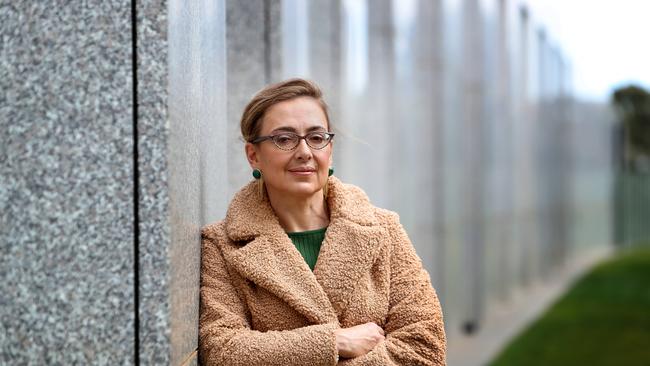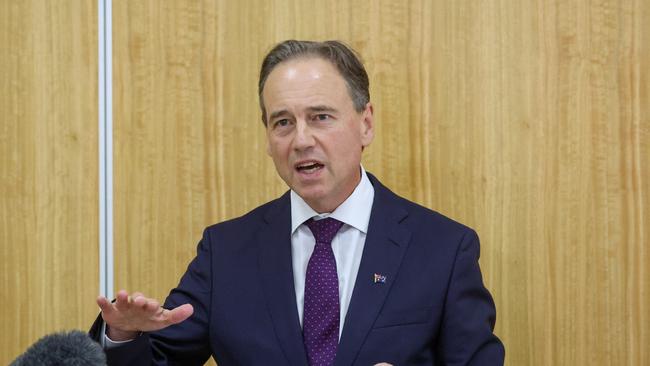The Federal budget deal adding $41 to your health fund premiums
A deal done earlier this year has meant Aussies will be slugged more in their health premiums. Here’s what you’ll pay.
National
Don't miss out on the headlines from National. Followed categories will be added to My News.
Exclusive: Families are paying $41 more for health premiums because of a controversial deal insurers want scrapped in the upcoming federal budget.
Private Healthcare Australia (PHA) has written to every federal MP, lobbying for change to the obscene prices Australians pay for medical devices like hip and knee replacements — sometimes 100 per cent more than those overseas.
In the 2021 federal budget, the Morrison government introduced a program to slowly reduce private medical device costs to the price paid by public hospitals.
As a result of the deal Australians would still be paying the highest prices in the world, but it would have reduced costs by more $1 billion over four years — and brought down premiums.
Months later, however, that deal was watered down in a Memorandum of Understanding (MOU) between the government and the medical device industry.
Private insurers claim the U-turn benefited wealthy medical device manufacturers and not health fund policy holders.
“Just before the election, the previous Health Minister Greg Hunt signed a secret deal with international medical device companies that locks in prices for medical devices in the private system — 7-20 per cent higher than public prices,” PHA chief executive Dr Rachel David says in the letter to MPs.

The Health Department consulted widely in the lead up to this agreement, holding 16 meetings with interested parties including health insurers and private hospitals.
However, the MOU was signed only with the medical device manufacturers and Ms David said she did not learn of the details until minutes before the deal was publicly announced.
Medical Technology Association of Australian (MTAA) chief executive Ian Burgess said the MOU “is delivering savings to insurers of more than $900 million, at a time when the corporate insurers are raking in their highest ever profits at $2 billion, an astounding 108 per cent increase on last year”.
The insurers were trying to overturn a guarantee that private patients could have their choice of which medical device their doctors used because they wanted to “put profits before patients”, Mr Burgess said.
The Member’s Health Alliance which represents 25 of Australia’s smaller health funds said the reforms to medical device pricing made by the previous government were “a positive step in the right direction with more work to follow”.
The Alliance’s chief executive Matthew Koce said his organisation wanted further changes to drive down costs including a single centralised body to purchase medical devices for both public and private hospitals, similar to that in France.

Two days before the 2022 election, the ALP agreed to honour the MOU.
“Labor will honour the Prostheses List Agreement signed between MTAA and the Commonwealth in March of this year,” now Health Minister Mark Butler said in a letter to the MTAA on May 19.
If the new Labor government reversed the MOU, health fund premiums would drop and, in addition, taxpayers would save $100 million, Dr David said.
Scrapping the deal would save consumers $250-400 million over four years, with the typical family saving $26-$41 on silver policy premiums.
With cost of living pressures biting across the community, making this change in the October budget would save both consumers and taxpayers money.
At least 4996 medical devices will have a surcharge of 7-20 per cent under the changes made by Mr Hunt.
Examples of the high-priced medical devices pushing up your premiums
* A plate that cost private patients $659. In the public sector, it costs under $150.
* A screw that costs private patients $223. In public hospitals, it costs under $100.
* A drug eluting stent (a device used to unblock clogged arteries) that costs private patients $1699. In public hospitals, the price is $800.
* Pledgets that protect tissue from rupturing or friction caused by sutures cost private patients $46. The public price is $10.
Health Minister Mark Butler said the Government’s priority “is that people can access affordable medicines, treatments and medical devices and that the Australian taxpayer gets value for money, both in the public system and through our support for private health insurance”.
“I am engaging with all stakeholders to get a clear understanding of what the former Minister agreed to regarding the prostheses list,” he said.





